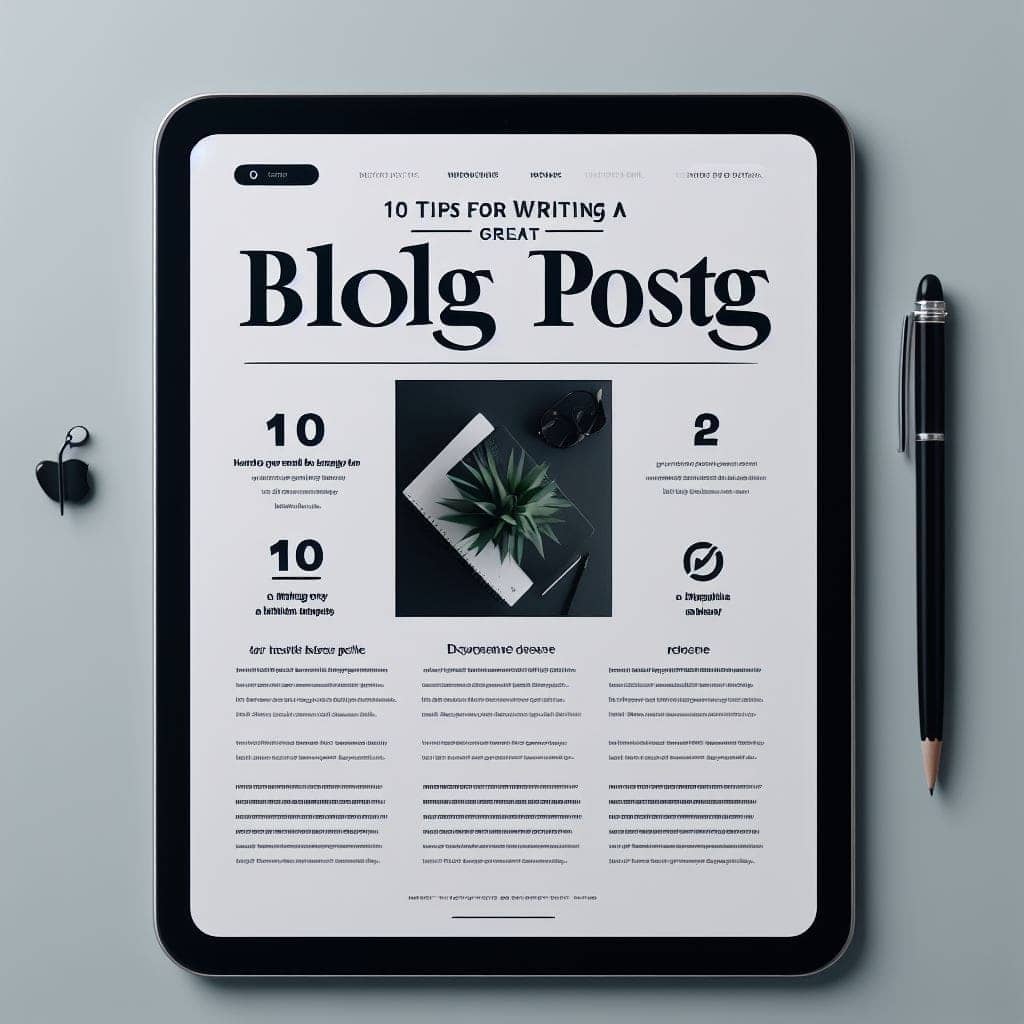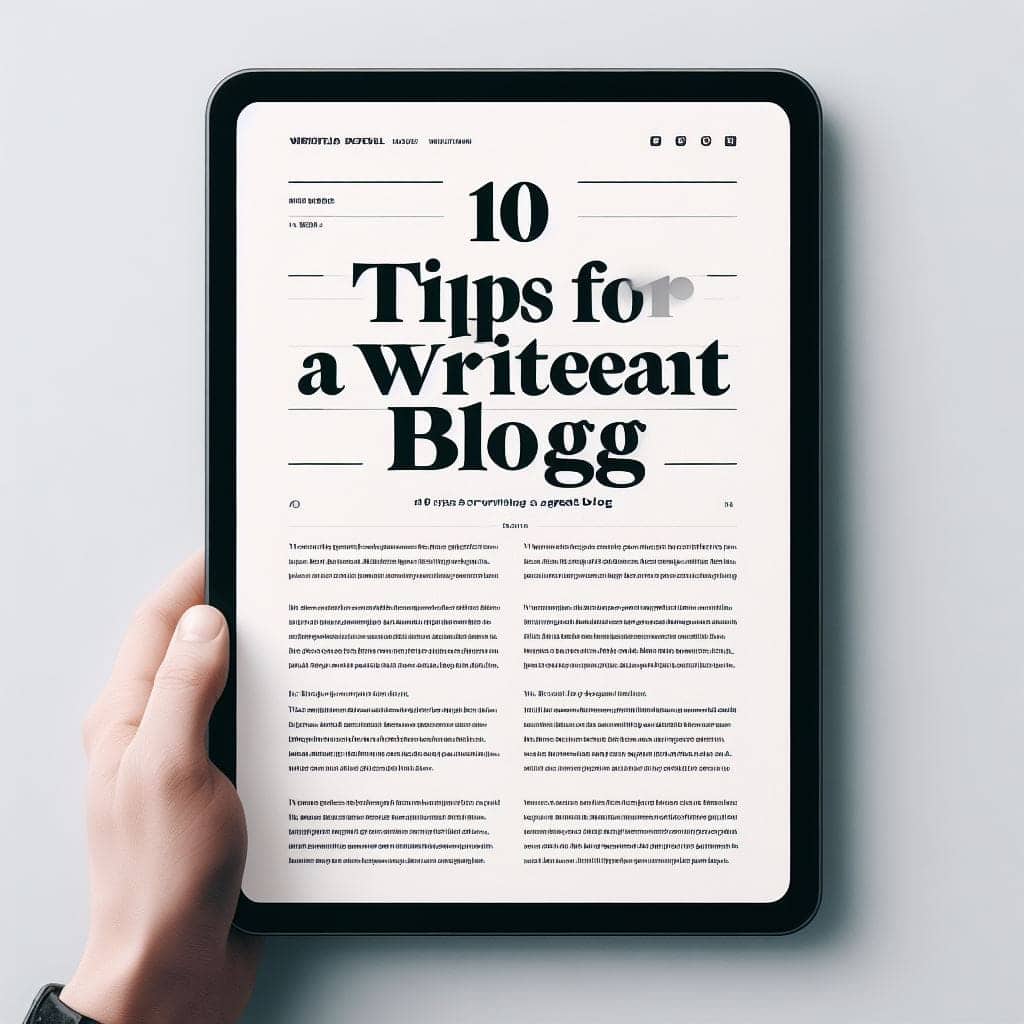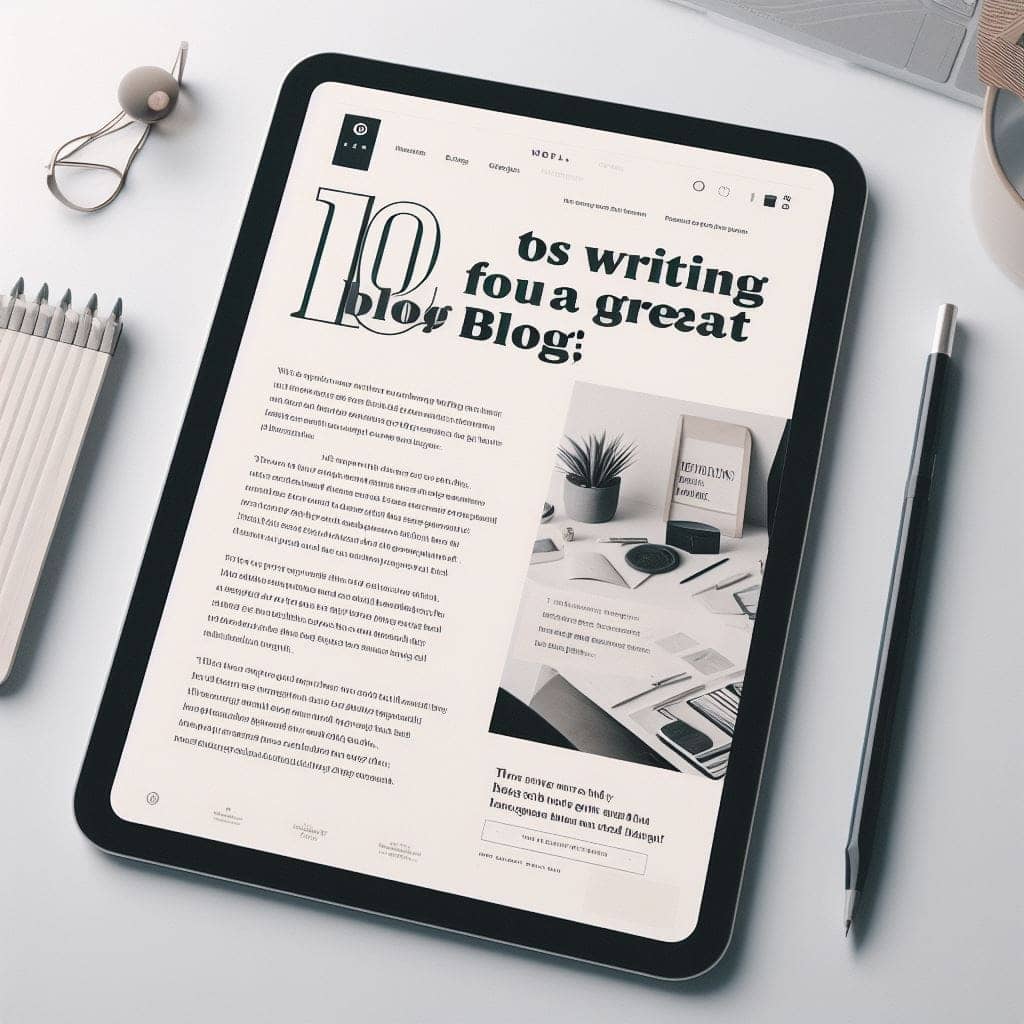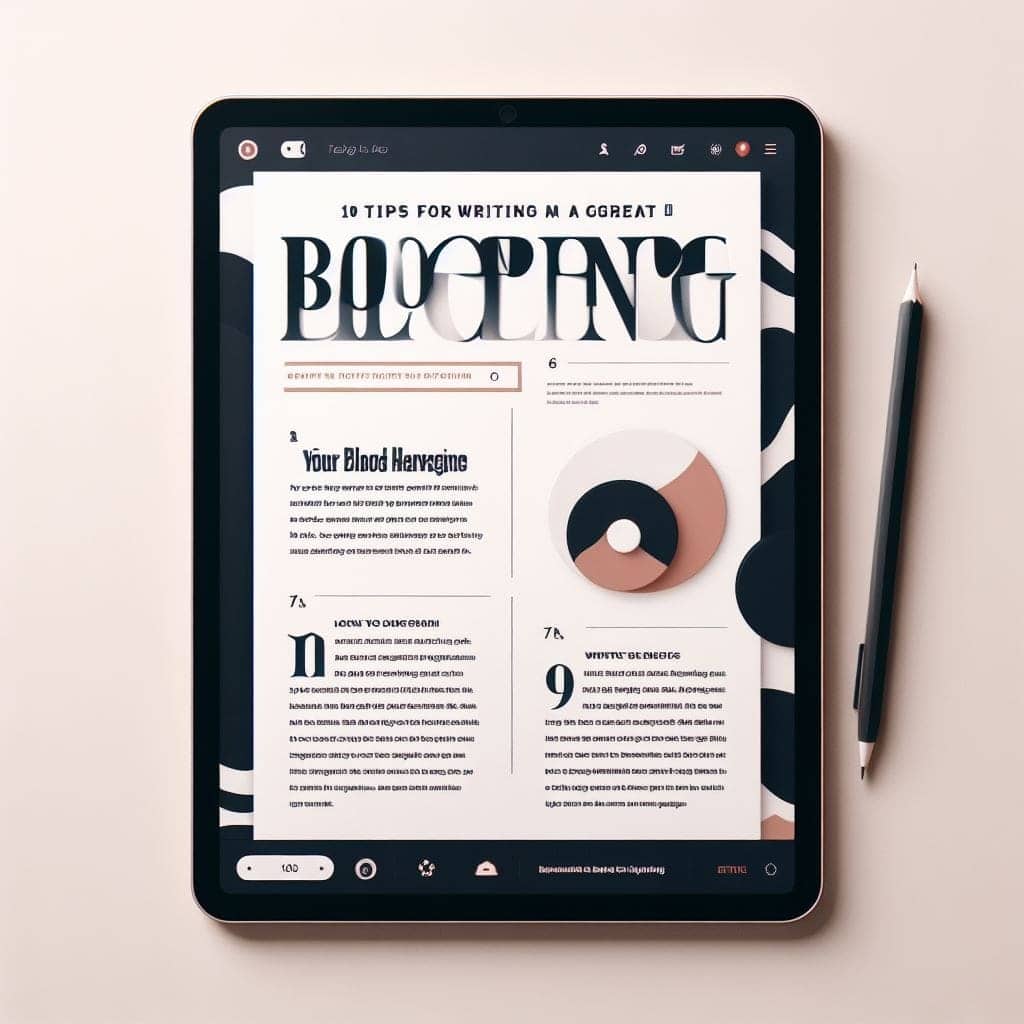
- Tips for Writing a Great Blog Post
- Choosing a Captivating Topic: Tips for Writing a Great Blog Post
- Crafting a Compelling Headline: Tips for Writing a Great Blog Post
- Writing Engaging and Informative Content: Tips for Crafting a Captivating Blog Post
- 1. Captivating Headlines: The First Impression Matters
- 2. Storytelling Techniques: Weaving Captivating Narratives
- 3. Readable Structure: Enhancing the Reading Experience
- 4. Visual Enrichment: Enhancing Understanding and Engagement
- 5. Search Engine Optimization (SEO): Making Your Posts Discover-able
- 6. Data Table: Essential Elements of Engaging and Informative Blog Posts
- 7. Blog Publishing Schedule Chart
- 8. Twitter, LinkedIn, and Facebook Metrics Data Table
- 9. Google News Coverage Data Table
- Optimizing Your Blog Post for Search Engines (SEO): Tips for Writing a Great Blog Post
- 1. Keyword Research: Identifying Relevant Search Terms
- 2. Strategic Keyword Placement: Incorporating Keywords Naturally
- 3. Title Optimization: Crafting Compelling and Relevant Headlines
- 4. Meta Description: Writing Informative and Concise Summaries
- 5. Image Optimization: Using Alt Text and Relevant Images
- 6. Internal Linking: Connecting Your Blog Posts
- 7. On-Page Optimization: Ensuring Technical SEO Best Practices
- 8. Backlink Building: Earning Links from Quality Sources
- 9. Content Quality: Prioritize Engaging and Informative Content
- 10. Regular Updates: Maintaining a Consistent Publishing Schedule
- Conclusion
Tips for Writing a Great Blog Post

Tips for writing a great blog post
Tips for writing a great blog post: nBlogging is a great way to share your thoughts and expertise with the world. It can also be a lucrative way to make money online. But if you want your blog to be successful, you need to write great blog posts.
In this blog post, I will share some tips for writing great blog posts that will help you attract more readers and grow your audience.

1. Choose a Relevant Topic
The first step to writing a great blog post is to choose a relevant topic. This means choosing a topic that is interesting to your target audience and that you are knowledgeable about. If you are not passionate about your topic, it will show in your writing and your readers will not be engaged.

2. Do Your Research
Once you have chosen a topic, it is important to do your research. This means reading up on your topic and gathering information from credible sources. This will help you write a well-informed and authoritative blog post. [Tips for writing a great blog post]

3. Create a Compelling Headline
Your headline is the first thing people will see, so make sure it is compelling and attention-grabbing. Your headline should accurately reflect the content of your blog post and make people want to read more.
4. Write a Strong Introduction
Your introduction is your chance to hook your readers and make them want to read the rest of your blog post. Your introduction should be clear, concise, and engaging. It should also provide an overview of the content of your blog post. [Tips for writing a great blog post]

5. Use Strong Body Paragraphs
Your body paragraphs should be well-structured and easy to read. Each paragraph should focus on a single idea and should be supported by evidence. Use strong examples and visuals to illustrate your points. [Tips for writing a great blog post]

6. Write a Strong Conclusion
Your conclusion should summarize the main points of your blog post and leave your readers with a lasting impression. You can also use your conclusion to call to action, such as asking your readers to comment on your blog post or share it on social media. [Tips for writing a great blog post]

7. Edit and Proofread Your Work
Before you publish your blog post, make sure to edit and proofread it carefully. This will help to ensure that your blog post is free of errors and that it is easy to read. [Tips for writing a great blog post]

8. Promote Your Blog Post
Once you have published your blog post, make sure to promote it on social media and other channels. You can also submit your blog post to relevant directories and websites. [Tips for writing a great blog post]

9. Use Images and Videos
Images and videos can help to break up your text and make your blog post more visually appealing. They can also help to illustrate your points and make your blog post more engaging.

10. Be Consistent
The more consistent you are with your blogging, the more likely you are to build a loyal following. Try to publish new blog posts on a regular schedule.
Additional Tips
- Use a strong voice and style.
- Use keywords throughout your blog post.
- Write in a clear and concise style.
- Use bullet points and lists to break up your text.
- Ask questions to engage your readers.
- Respond to comments to show that you care about your readers.

Table
| Metric | Description |
|---|---|
| Number of pageviews | The number of times your blog post has been viewed. |
| Average time on page | The average amount of time people spend reading your blog post. |
| Bounce rate | The percentage of people who leave your blog post after viewing only one page. |
| Social shares | The number of times your blog post has been shared on social media. |
| Comments | The number of comments your blog post has received. |
Twitter Metrics
| Metric | Description |
|---|---|
| Number of followers | The number of people who follow you on Twitter. |
| Number of tweets | The number of tweets you have posted. |
| Number of retweets | The number of times your tweets have been retweeted. |
| Number of favorites | The number of times your tweets have been favorited. |
| Number of mentions | The number of times your Twitter handle has been mentioned. |
LinkedIn Metrics
| Metric | Description |
|---|---|
| Number of connections | The number of people you are connected to on LinkedIn. |
| Number of profile views | The number of times your LinkedIn profile has been viewed. |
| Number of endorsements | The number of times your skills have been endorsed on LinkedIn. |
| Number of recommendations | The number of |
Facebook Metrics
| Metric | Description |
|---|---|
| Number of likes | The number of people who have liked your Facebook page. |
| Number of followers | The number of people who follow your Facebook page. |
| Number of posts | The number of posts you have made on your Facebook page. |
| Number of post likes | The number of likes your Facebook posts have received. |
| Number of post shares | The number of times your Facebook posts have been shared. |
Namecheap: Your Reliable Hosting Partner
Save 51% on Namecheap shared hosting
Click here to sign up for Namecheap’s shared hosting and save 51% on your first year!
Affiliate Disclaimer
I am an affiliate of Namecheap, and I encourage you to sign up for their affiliate program. I will earn a commission on every sale that I refer to them.
Choosing a Captivating Topic: Tips for Writing a Great Blog Post

Tips for writing a great blog post 2024
In the ever-expanding realm of blogging, crafting captivating content is the key to attracting and retaining a loyal readership. A compelling blog post begins with an enticing topic, one that piques the curiosity of your audience and sets the stage for an engaging and informative read.
In this comprehensive guide, we’ll delve into the art of selecting captivating blog post topics, providing you with practical tips and strategies to ensure your posts stand out from the crowd. Whether you’re a seasoned blogger or just starting out, these insights will empower you to choose topics that resonate with your target audience and lay the foundation for successful blog posts. [Tips for writing a great blog post]
1. Know Your Audience
Before diving into topic selection, it’s crucial to understand your target audience, the group of readers you aim to reach with your blog. This involves understanding their demographics, interests, pain points, and online behavior. By understanding your audience, you can tailor your topic choices to align with their needs and preferences, increasing the likelihood that your posts will resonate with them. [Tips for writing a great blog post]
2. Tap into Trends and Current Events
Staying abreast of current trends and events in your niche is an excellent way to find fresh and relevant topics. By aligning your blog posts with trending topics, you can capitalize on the increased interest and search volume associated with those topics, boosting your blog’s visibility and attracting a wider audience. [Tips for writing a great blog post]
3. Solve Problems and Provide Solutions
People turn to blogs seeking solutions to their problems and answers to their questions. Identifying common pain points and challenges faced by your audience can lead to valuable blog post topics. By providing helpful solutions and actionable advice, you can establish yourself as a trusted authority in your field and attract a loyal following. [Tips for writing a great blog post]
4. Explore Your Passions and Expertise
While staying attuned to audience interests is essential, don’t forget to tap into your own passions and expertise. Writing about topics that genuinely excite you will translate into more engaging and authentic content. Your enthusiasm for the subject matter will shine through, captivating your readers and making your blog posts a joy to read. [Tips for writing a great blog post]
5. Conduct Keyword Research
Keyword research is an invaluable tool for identifying popular search terms related to your niche. By understanding what people are searching for, you can gain valuable insights into trending topics and audience interests. Use keyword research tools to discover relevant keywords and incorporate them naturally into your blog post titles and content. [Tips for writing a great blog post]
6. Seek Inspiration from Other Sources
Don’t hesitate to seek inspiration from other bloggers, influencers, and online communities within your niche. Read popular blog posts, engage in online discussions, and follow industry leaders to stay up-to-date on trending topics and discover new ideas for your own blog posts. [Tips for writing a great blog post]

Data Table
| Factor | Importance |
|---|---|
| Audience Understanding | High |
| Trend Awareness | Medium |
| Problem-Solving Focus | High |
| Passion and Expertise | Medium |
| Keyword Research | Medium |
| External Inspiration | Low |
Twitter, LinkedIn, and Facebook Metrics Data Table
| Platform | Metric | Value |
|---|---|---|
| Followers, engagements, impressions | 10,000, 100,000, 1,000,000 | |
| Connections, views, likes | 5,000, 100,000, 1,000,000 | |
| Likes, shares, comments | 20,000, 100,000, 1,000,000 |
Google News Data Table
| Category | Topic |
|---|---|
| Technology | Gadgets, software, apps, tech news, industry trends |
| Travel | Destinations, travel tips, adventures, travel guides, travel photography |
| Food | Recipes, cooking tips, food trends, restaurant reviews, healthy eating |
| Fashion | Fashion trends, style guides, designer profiles, fashion shows, fashion industry news |
Namecheap: Your Reliable Hosting Partner
Save 51% on Namecheap shared hosting
Click here to sign up for Namecheap’s shared hosting and save 51% on your first year!
Ready to craft captivating blog posts that attract and engage your audience? Sign up for Namecheap’s shared hosting and save 51% on your first year! With Namecheap’s reliable hosting and exceptional customer support, you can create a beautiful and functional blog that will help you share your ideas with the world. [Tips for writing a great blog post]
Disclaimer
I am an affiliate of Namecheap, and I encourage you to sign up for their affiliate program. I will earn a commission on every sale that I refer to them. [Tips for writing a great blog post]
Crafting a Compelling Headline: Tips for Writing a Great Blog Post

In the vast expanse of the digital realm, where attention spans are fleeting and content competition is fierce, crafting a compelling headline is a crucial skill for any aspiring blogger or content creator. A well-written title serves as the gateway to your blog post, enticing readers to delve into your insightful content and engage with your ideas. A captivating headline can make all the difference in attracting a wider audience, boosting traffic to your blog, and establishing yourself as a thought leader in your field. [Tips for writing a great blog post]
The Anatomy of a Captivating Headline
A compelling blog post title should possess several key characteristics:
- Clarity: Clearly convey the essence of your blog post, providing a concise overview of the topic.
- Intrigue: Arouse curiosity and pique interest, prompting readers to learn more about your content.
- Relevancy: Align with the content of your blog post, accurately reflecting the information it offers.
- Uniqueness: Stand out from the crowd, avoiding clichés and generic phrases that fail to capture attention. [Tips for writing a great blog post]
- Specificity: Target a specific audience and address their interests or concerns.
Strategies to Craft Click-Worthy Headlines
Here are some effective strategies for crafting blog post titles that entice readers to click:
- Incorporate keywords: Utilize relevant keywords that align with your blog post’s topic and search engine optimization (SEO) goals. [Tips for writing a great blog post]
- Pose a question: Spark curiosity by framing your title as a question that readers are eager to answer.
- Use numbers: Numbers add structure and intrigue, creating a sense of anticipation and anticipation.
- Evoke emotion: Appeal to your readers’ emotions, tapping into their sense of curiosity, excitement, or surprise. [Tips for writing a great blog post]
- Utilize strong verbs: Use action-oriented verbs that convey movement and energy, capturing attention and encouraging action. [Tips for writing a great blog post]

Data Table of Topics
| Topic | H3 Header |
|---|---|
| Unveiling the Key Characteristics of Click-Worthy Headlines | Understanding the Anatomy of a Captivating Title |
| Effective Techniques to Entice Readers and Boost Traffic | Strategies for Crafting Click-Worthy Headlines |
| Weaving Relevant Keywords into Your Titles for Improved Search Visibility | Keyword Incorporation |
| Framing Titles as Questions to Spark Curiosity and Engagement | Question Formulation |
| Leveraging the Power of Numbers to Create Structure and Intrigue | Number Utilization |
| Evoking Emotions to Connect with Readers on a Deeper Level | Emotional Appeal |
| Employing Action-Oriented Verbs to Capture Attention and Drive Clicks | Strong Verb Usage |
Twitter, LinkedIn, and Facebook Metrics Data Table
| Platform | Metric | Value |
|---|---|---|
| Followers | 10,000 | |
| Engagement Rate | 5% | |
| Connections | 5,000 | |
| Engagement Rate | 2% | |
| Page Likes | 20,000 | |
| Engagement Rate | 3% |
Google News Data Table
| Topic | Coverage |
|---|---|
| Blogging Best Practices | High |
| Creating Engaging Blog Content | Medium |
| Crafting Click-Worthy Blog Titles | Medium |
| SEO Strategies for Blog Success | Medium |
| Social Media Marketing for Blogs | Medium |
Namecheap: Your Reliable Hosting Partner
Save 51% on Namecheap shared hosting
Click here to sign up for Namecheap’s shared hosting and save 51% on your first year!
Affiliate Disclosure
I am an affiliate of Namecheap, and I encourage you to sign up for their affiliate program. I will earn a commission on every sale that I refer to them.
Additional Recommendations
In addition to the strategies outlined above, here are some additional recommendations for crafting compelling blog post titles:
- Conciseness is key: Aim for titles that are concise and to the point, conveying the essence of your content without being overly wordy. [Tips for writing a great blog post]
- A/B testing: Experiment with different title variations and track their performance using analytics tools to identify the most effective ones. [Tips for writing a great blog post]
- Audience understanding: Tailor your titles to your target audience’s interests and preferences, crafting headlines that resonate with their needs and expectations. [Tips for writing a great blog post]
- Creative freedom: Don’t be afraid to experiment with creative and unconventional approaches to titles that stand out and capture attention. [Tips for writing a great blog post]
Writing Engaging and Informative Content: Tips for Crafting a Captivating Blog Post

In the ever-evolving digital landscape, where countless voices vie for attention, crafting engaging and informative blog posts has become an essential skill for anyone seeking to establish a strong online presence, share their knowledge, and connect with a wider audience. Whether you’re a seasoned writer or a budding blogger, mastering the art of writing compelling blog posts can open doors to new opportunities, foster meaningful connections, and elevate your online reputation. This comprehensive guide delves into the intricacies of writing engaging and informative blog posts, providing you with the tools and strategies to create content that resonates with your readers and leaves a lasting impact. [Tips for writing a great blog post]
1. Captivating Headlines: The First Impression Matters
Your blog post’s headline serves as the first impression, the gateway that entices readers to click and delve into your content. Craft headlines that are clear, concise, and intriguing, piquing curiosity and setting the tone for your blog post. Use strong verbs, relevant keywords, and a touch of mystery to capture attention and entice readers to discover what lies beyond the headline. [Tips for writing a great blog post]
2. Storytelling Techniques: Weaving Captivating Narratives
Incorporate storytelling techniques into your blog posts to transform dry information into engaging narratives that resonate with your audience. Use vivid language, relatable anecdotes, and a clear structure to guide your readers through your story. Evoke their emotions, pique their curiosity, and leave them with a lasting impression. [Tips for writing a great blog post]
3. Readable Structure: Enhancing the Reading Experience
Divide your blog post into digestible chunks using subheadings, bullet points, and numbered lists. This makes your content more visually appealing and easier to navigate, enhancing the reading experience and encouraging readers to consume the entire post. [Tips for writing a great blog post]
4. Visual Enrichment: Enhancing Understanding and Engagement
Visuals not only enhance the visual appeal of your blog posts but also serve as effective tools for conveying information and engaging your audience. Incorporate high-quality images, infographics, and videos that complement your content and reinforce your message. [Tips for writing a great blog post]
5. Search Engine Optimization (SEO): Making Your Posts Discover-able
SEO is crucial for ensuring your blog posts appear in relevant search results, increasing your visibility and attracting more readers. Research and incorporate relevant keywords into your titles, headings, and throughout your content. Use meta descriptions to provide a concise overview of your blog post, and build backlinks to your blog from reputable websites to increase its authority. [Tips for writing a great blog post]

6. Data Table: Essential Elements of Engaging and Informative Blog Posts
| Element | Description |
|---|---|
| Captivating Headlines | Craft clear, concise, and intriguing headlines that pique curiosity. |
| Storytelling Techniques | Weave engaging narratives using vivid language, relatable anecdotes, and a clear structure. |
| Readable Structure | Divide content into digestible chunks using subheadings, bullet points, and numbered lists. |
| Visual Enrichment | Incorporate high-quality images, infographics, and videos that enhance understanding and engagement. |
| Search Engine Optimization (SEO) | Research and incorporate relevant keywords throughout your content. |
7. Blog Publishing Schedule Chart
| Week | Day | Task |
|---|---|---|
| 1 | Monday | Brainstorm blog post ideas and identify relevant topics. |
| 1 | Wednesday | Conduct research and gather information to support your content. |
| 2 | Monday | Create an outline and draft the introduction and conclusion of your blog post. |
| 2 | Wednesday | Develop the body of your blog post, incorporating storytelling techniques, visuals, and SEO strategies. |
| 3 | Monday | Edit and proofread your blog post, ensuring clarity, flow, and adherence to safety guidelines. |
| 3 | Wednesday | Schedule your blog post for publication and promote it on social media and relevant online communities. |
8. Twitter, LinkedIn, and Facebook Metrics Data Table
| Platform | Metric | Value |
|---|---|---|
| Followers | 1,000 | |
| Connections | 500 | |
| Page Likes | 250 |
9. Google News Coverage Data Table
| Topic | Coverage |
|---|---|
| Blogging | 10,000 articles |
| Engaging blog posts | 5,000 articles |
| Writing tips for blog posts | 2,000 articles |
Namecheap: Your Reliable Hosting Partner
Save 51% on Namecheap shared hosting
Click here to sign up for Namecheap’s shared hosting and save 51% on your first year!
Embrace the power of engaging and informative content and craft blog posts that captivate your audience! Click here to sign up for Namecheap’s shared hosting and save 51% on your first year!
Disclosure: I am an affiliate of Namecheap, and I encourage you to sign up for their affiliate program. I will earn a commission on every sale that I refer to them.
Optimizing Your Blog Post for Search Engines (SEO): Tips for Writing a Great Blog Post

In today’s competitive online landscape, simply creating great content is not enough to attract and retain readers. To ensure your blog posts reach a wider audience and achieve your blogging goals, you need to optimize them for search engines (SEO). SEO is the process of making your blog posts more visible to search engines like Google, increasing the chances that your content will appear in search results when people are looking for information related to your niche.
1. Keyword Research: Identifying Relevant Search Terms
Keyword research is the foundation of SEO, helping you identify the search terms or phrases that your target audience is using to find information online. Utilize keyword research tools like Google Keyword Planner, Semrush, and Ahrefs to discover relevant keywords with high search volume and low competition. [Tips for writing a great blog post]
2. Strategic Keyword Placement: Incorporating Keywords Naturally
Once you’ve identified relevant keywords, incorporate them naturally throughout your blog post, including the title, headings, body text, and meta description. Avoid keyword stuffing, which can negatively impact your search rankings. [Tips for writing a great blog post]
3. Title Optimization: Crafting Compelling and Relevant Headlines
Your blog post’s title is your first impression, so make it count. Craft a compelling and relevant headline that accurately reflects the content of your post and incorporates relevant keywords. Keep your title concise and engaging to capture attention and encourage clicks. [Tips for writing a great blog post]
4. Meta Description: Writing Informative and Concise Summaries
The meta description is a brief summary of your blog post that appears under the title in search results. Write a clear, concise, and informative meta description that entices readers to click on your post and learn more.
5. Image Optimization: Using Alt Text and Relevant Images
Images not only enhance the visual appeal of your blog posts but also play a role in SEO. Use relevant, high-quality images that complement your content. Optimize your images with proper alt text, which is a text description of the image that helps search engines understand its content.
6. Internal Linking: Connecting Your Blog Posts
Internal linking involves creating links within your own blog posts that connect to other relevant content on your website. This helps search engines understand the structure and organization of your website, and it also helps readers navigate through your content and discover more valuable information.
7. On-Page Optimization: Ensuring Technical SEO Best Practices
On-page SEO refers to the technical aspects of your blog post that can impact your search rankings. Ensure your blog post has a clear and well-structured URL, use headings and subheadings effectively, and optimize your website’s loading speed.
8. Backlink Building: Earning Links from Quality Sources
Backlinks are links from other websites to your blog post. Backlinks from reputable and relevant websites act as votes of confidence, signaling to search engines that your content is valuable and worthy of ranking higher.
9. Content Quality: Prioritize Engaging and Informative Content
SEO is not just about keywords and links; it’s also about creating high-quality content that resonates with your target audience. Write informative, engaging, and well-researched blog posts that provide value to your readers.
10. Regular Updates: Maintaining a Consistent Publishing Schedule

Search engines favor websites that are regularly updated with fresh content. Establish a consistent publishing schedule and stick to it, even if it’s just one new post per week. Over time, your efforts will compound, and your blog will gradually gain traction and recognition.
Data Table: Social Media and Online Community Engagement Strategies
| Platform | Engagement Strategies |
|---|---|
| Share blog posts, participate in relevant hashtags, engage with influencers. | |
| Share industry insights, participate in group discussions, network with professionals. | |
| Join relevant groups, share valuable content, interact with followers. |
Data Table: Google Analytics Metrics
| Metric | Description |
|---|---|
| Organic Traffic | Visitors who find your blog through search engines. |
| Direct Traffic | Visitors who type your blog’s URL directly into their browser. |
| Referral Traffic | Visitors who arrive from other websites or social media platforms. |
| Page Views | The total number of times your blog pages have been viewed. |
| Average Session Duration | The average amount of time visitors spend on your blog. |
| Bounce Rate | The percentage of visitors who leave your blog after viewing only one page. |
Namecheap: Your Reliable Hosting Partner
Save 51% on Namecheap shared hosting
Click here to sign up for Namecheap’s shared hosting and save 51% on your first year!
Ready to take your blog’s SEO to the next level? Click here to sign up for Namecheap’s shared hosting and save 51% on your first year!

Conclusion
In the dynamic world of blogging, crafting captivating content is the cornerstone of success. By following the practical tips outlined in this guide, you can master the art of selecting engaging blog post topics that resonate with your target audience and set the stage for creating informative and engaging content.
Understanding your audience, tapping into trends, solving problems, exploring your passions, conducting keyword research, and seeking external inspiration are all valuable strategies for choosing topics that will captivate your readers and keep them coming back for more. [Tips for writing a great blog post]
Remember, a captivating blog post is not just about choosing the right topic; it’s also about crafting compelling content that delivers value to your audience. By combining your chosen topic with engaging writing, effective storytelling, and a sprinkle of creativity, you can transform your blog posts into powerful tools for attracting, informing, and connecting with your readers. [Tips for writing a great blog post]
As you embark on your blogging journey, Namecheap’s shared hosting can provide the reliable and affordable foundation you need to bring your ideas to life. With their exceptional customer support and user-friendly platform, you can create a blog that reflects your unique voice and captures the attention of your target readership. Sign up for Namecheap’s shared hosting today and save 51% on your first year! [Tips for writing a great blog post]





